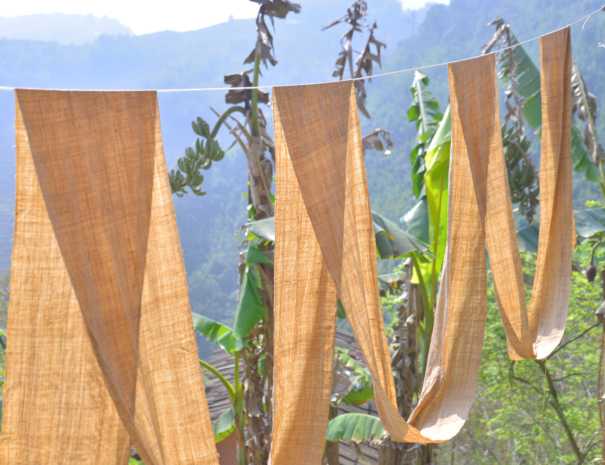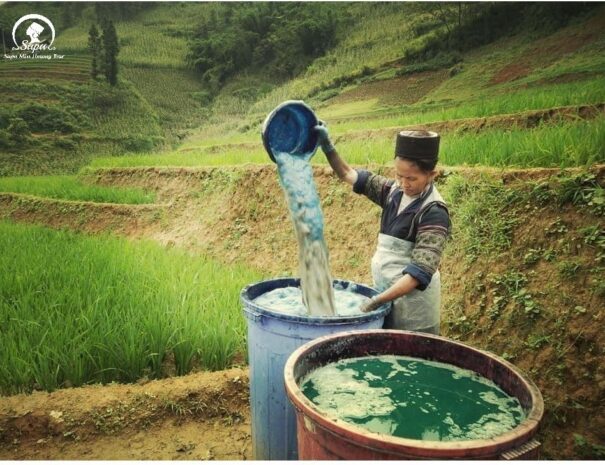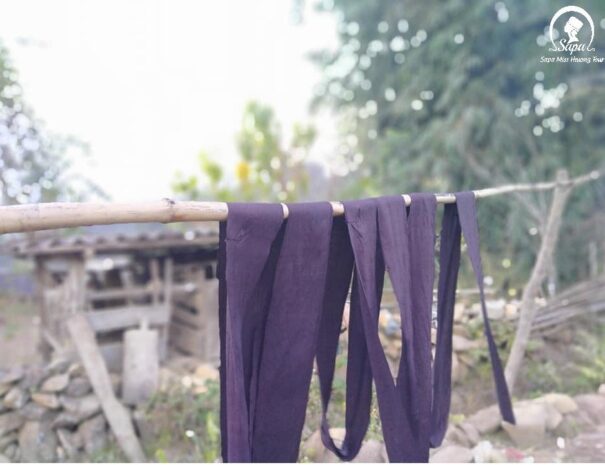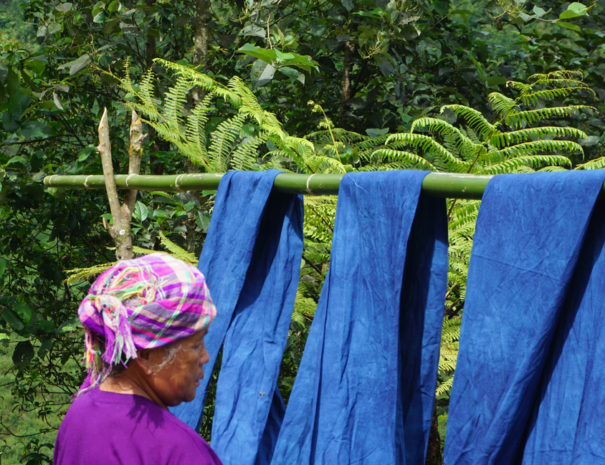BATIK – INDIGO – HELMP
BATIK – INDIGO - HELMP
BATIK DESIGN
Wandering down any of Sapa’s small streets or even within the quiet fields between villages, you will always catch a glimpse of many different kinds of colorful clothing and intricate patterns worn by the women of the surrounding hill tribes. One of the most prominent groups in the area, the H’mong, can always be identified by their colorful headscarves and long, pleated skirts covered in embroidery. But where do they get these pieces of clothing? Keep reading to find out! Melting wax to prepare the batik design There are many kinds of ways H’mong women decorate their fabric, depending on the sub-group. While the Red H’mong and Flower H’mong create their patterns via the applique technique and embellish their outfits with decorative stitching and baubles, the Black and Blue H’mong create their masterpieces through the use of natural indigo dyeing and batik design. First, they prepare the fire with charcoal for heat consistency and then melt a mixture of beeswax with candle wax together until it comes to a boil. The wax temperature is imperative to the design as if it’s too hot it will be too liquidy and not able to hold a design, while not hot enough means the wax will dry before it can be applied to the fabric.




Indigo
Since our great grandmother remembered, Indigo as a plante that gives blue corlour was already there. It most be find out by someone since centuries ago and it had been passing on by generations, mailny from mothers to daughters. We first grow indigo for a year, when it grows for about 1m high, we cut the whole plante to put in a buket with a lot of water for about 4days . Once the water turns into blue corlour, we mix some powder from a special rock so it produces a lot of bubbles and sink some innk under the buket. We Then use these bubbles and innk to mix again with ash water and rice win to help us to come up the blue colour we want. The first time we put the fabric into the indigo it’s a bit green, then blue and black...and so on. Our Hmong ladies hands are mainly staying with full of blue colour.
Hemp
Hemp weaving of the Mong people has existed for a long time. Any Hmong woman who reaches adulthood must know how to sew hemp, weave fabrics, make dresses, and serve the daily life of the family. The weaving of hemp also shows the ingenuity and hard work of women. In addition, linen also has a very important meaning in the spiritual life of the Mong people. At the beginning of August, throughout the Hmong villages in Sa Pa, farmers begin to collect and dry hemp plante. The hemp plante is a variety of Cannabis sativa that has been cultivated for its fiber. We first grow it from April till end of July, then cut it to dry and the bark of the hemp tree is stripped into small strandspell to produce our own fabric for our tradionnal clothes. Once we have done with the bark hemp into small strandspell, we then Connect all the small strandspell wires together to make it into one very long wires. With this long wire we and our wooden looms we weave this long wires into fabric.

